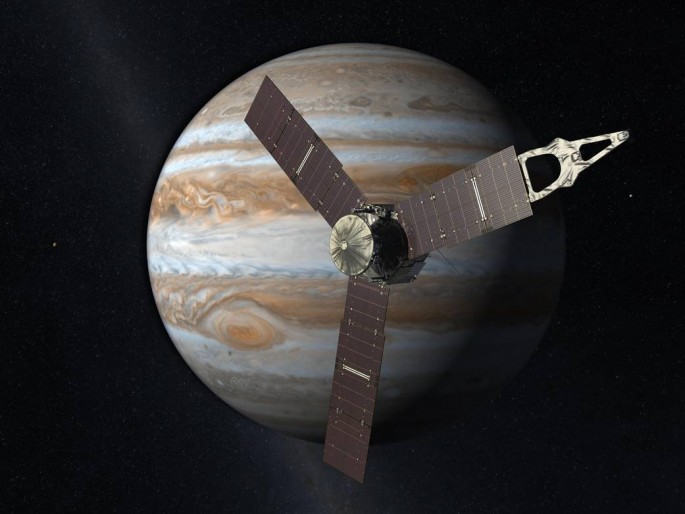NASA has achieved a breakthrough, yet again, and this time it involves the most giant planet in the solar system - Jupiter. The space agency has confirmed that it has received signals suggesting that its spacecraft, Juno, has started orbiting Jupiter.
The American space agency has finally received signals from 540 million miles across the solar system, according to CNN. The Juno team at NASA cheered and hugs each other as "Welcome to Jupiter" flashed on screens in the mission control center at NASA's Jet Propulsion Lab in Pasadena, California.
The entry of the Juno spacecraft into the orbit of Juno was indeed a tricky one. The spacecraft had to slow itself down to a speed that allows it to be pulled into the orbit. This was ultimately achieved when the spacecraft fired its main engine for 35 minutes straight while hitting the brakes to slow it by 1,212 miles per hour.
Juno was launched almost five years ago under a mission that aimed to study the evolution and composition of the giant gaseous planet. It is the first spacecraft to orbit Jupiter after Gallileo, which was purposely crashed in 2003 to protect its discovery about the presence of a possible ocean beneath Jupiter's moon Europa.
A preliminary check conducted by researchers at the space station suggests that the spacecraft is doing fine. The instruments aboard spacecraft were turned off by the team on Earth before the execution of the tricky orbit maneuver.
The aim of the mission involving Juno spacecraft this time is to understand how the solar system initially formed, according to USA Today. Researchers believe that Jupiter was the first planet that formed within the solar system and hence, it could hold clues to how the entire system formed in the first place.
Throughout the mission, Juno will have to take a dip beneath the radiation belts to collect data. Since that involves a lot of risks and would expose the spacecraft to enough radiation, Juno will take a dip only once in every two weeks and the duration of the dip would be restricted to only a few hours.
The research team behind the mission has equipped the spacecraft with a radiation-shielded titanium vault that possesses a majority of equipment aboard Juno. This is a step to minimize exposure.
The following is a real time simulation of the NASA'a Juno mission:



























